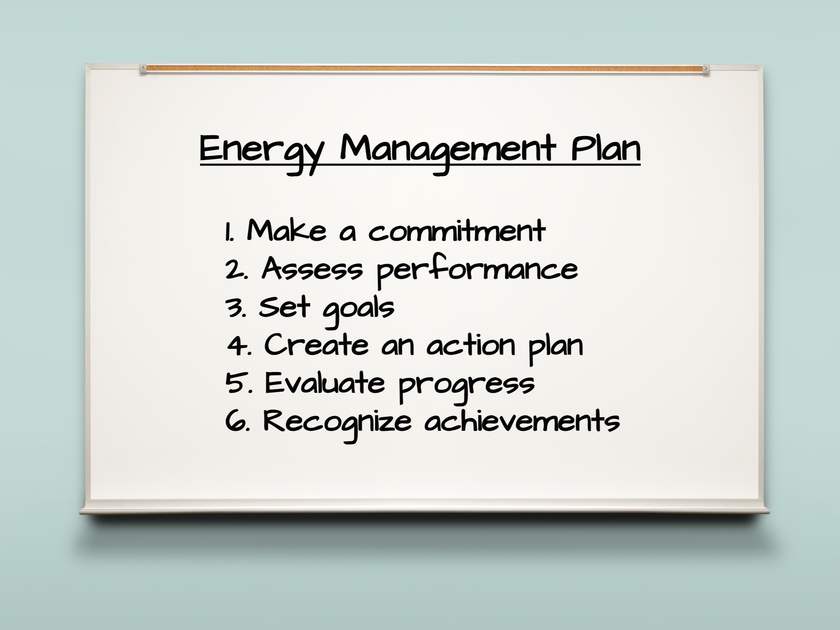Energy management planning is key to long-term cost savings. A successful plan must integrate factors that directly and indirectly affect energy use, and encompass conservation measures, upgrades, financing methods and procurement strategies. Focus on reducing energy and maintenance costs, using the savings to fund future energy management initiatives.
Steps to successful energy management
Although every organization is different, effective energy management programs typically include the following elements:
- System for monitoring energy use over time
- Processes for assessing energy performance
- Plan for continuous improvement, including periodic performance evaluations
- Policy for evaluating and investing in energy-efficient technology
- Resources and staffing to implement the technology
The U.S. Environmental Protection Agency developed Guidelines for Energy Management, which includes best practices of leading energy performers. Follow these six steps and you can improve your energy efficiency and gain a competitive edge:
- Make a commitment. Allocate staff and funding to achieve continuous improvement. Leading organizations form dedicated energy teams and institute energy policies.
- Assess performance. Measuring and comparing energy use is crucial in identifying opportunities to improve efficiency. Collect energy-use data and benchmark it against similar facilities using the ENERGY STAR® Portfolio Manager tool. Periodically evaluate energy use as a baseline for measuring future performance.
- Set goals. Clear and measurable goals establish the guidelines for performance improvement; they also provide a way to track progress and understand the results. Don't make it too complicated. An overall goal could be "Reduce energy use by 20% over three years." That's your target; everything else flows from there.
- Create and implement an action plan. With goals in place, you're poised to develop a road map for improving energy performance. A detailed action plan provides a systematic process for implementing energy-saving measures that align with your performance goals. Evaluate and update the plan regularly to reflect performance changes and shifting priorities.
- Evaluate progress. Review energy-use data and the activities carried out as part of the action plan at regular intervals, comparing the results to your performance goals. Many organizations use information gathered during the review process to create new action plans, identify best practices and set new performance goals.
- Recognize achievements. Acknowledging performance improvements will sustain momentum and support for your program. Reward staff members who have helped the organization achieve results. Consider LEED (Leadership in Energy and Environmental Design) or ENERGY STAR building performance certification. It will help publicize your organization's commitment to saving energy and improving the environment.
Implementing an energy management program may seem daunting, but a clear plan helps make the entire process easier.

